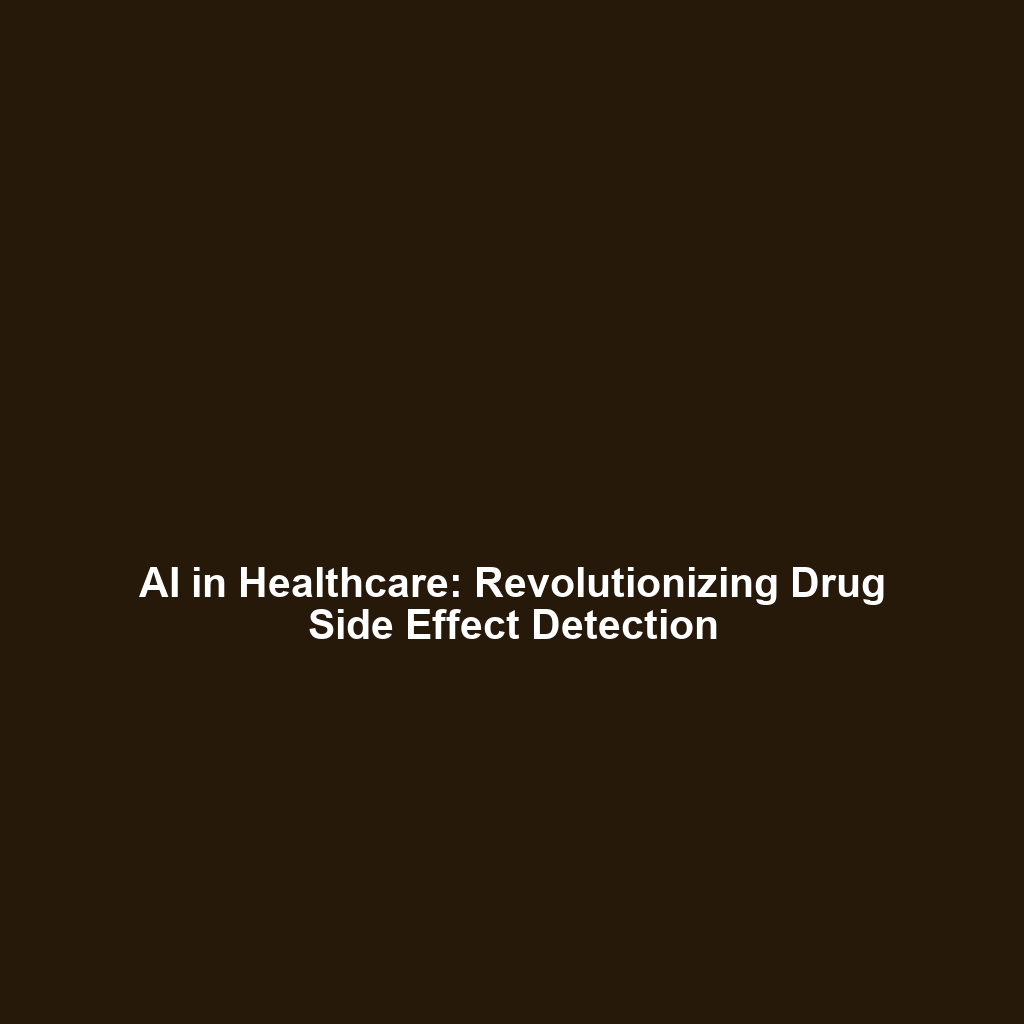AI’s Role in Detecting Drug Side Effects and Adverse Reactions through Real-Time Data Analysis
Introduction
Artificial Intelligence (AI) is rapidly transforming healthcare, especially in the realm of drug safety monitoring. The capability of AI to analyze vast quantities of real-time data aids in the early detection of drug side effects and adverse reactions. This innovation not only enhances patient care but also ensures the safety of pharmaceutical products. The significance of integrating AI in healthcare can’t be overstated, as it provides healthcare providers with critical insights that improve decision-making and patient outcomes. In this article, we will delve into AI’s integral role in detecting drug side effects, showcasing its impact and significance within the broader context of AI in Healthcare.
Key Concepts
Understanding AI in Drug Safety
AI leverages machine learning algorithms and data analytics to monitor drug effects in real-time. Some of the key principles include:
- Data Mining: Extracting relevant information from a myriad of sources.
- Natural Language Processing (NLP): Understanding unstructured data from scientific literature and social media to identify potential adverse effects.
- Predictive Analytics: Forecasting adverse reactions based on historical data.
These methodologies fit seamlessly into the category of AI in Healthcare, facilitating proactive responses to potential health risks.
Applications and Real-World Uses
The applications of AI in detecting drug side effects are profound and diverse. Some notable real-world examples include:
- Clinical Trials: AI models analyze patient data during drug trials to identify adverse reactions earlier than traditional methods.
- Pharmacovigilance: AI systems monitor reports from patients and healthcare professionals, rapidly flagging concerns that warrant further investigation.
- Social Media Monitoring: AI tools scan platforms like Twitter and Facebook for patient-reported outcomes, providing insights into drug safety.
These applications highlight how AI is used in healthcare to enhance drug safety monitoring and improve patient outcomes.
Current Challenges
Despite its promise, there are several challenges associated with AI’s role in detecting drug side effects:
- Data Quality: Inconsistent or incomplete data can lead to inaccurate predictions.
- Regulatory Hurdles: Navigating the complex landscape of healthcare regulations can slow down AI implementation.
- Ethical Concerns: Issues surrounding patient privacy and data security are paramount.
Addressing these challenges is crucial for the effective integration of AI in healthcare.
Future Research and Innovations
The future of AI in detecting drug side effects is promising, with numerous innovations on the horizon. Upcoming research focuses on:
- Enhanced Machine Learning: Developing more sophisticated algorithms that improve accuracy in predictions.
- Integration of Wearable Technology: Utilizing data from wearable devices to monitor real-time health metrics.
- Collaboration with Big Data Analytics: Leveraging large datasets from diverse healthcare systems for better insights.
These breakthroughs hold the potential to revolutionize the way we understand drug safety and patient care in the future.
Conclusion
In summary, AI’s role in detecting drug side effects and adverse reactions through real-time data analysis is instrumental in enhancing pharmaceutical safety and patient care within the healthcare sector. As technology evolves, embracing these advancements will be critical for healthcare providers and stakeholders. For more on AI in healthcare and related topics, visit our pages on AI in Healthtech and Drug Safety Innovations.
